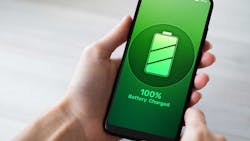A Guide to Battery Fast Charging (Part 1) (Download)
In this era of mobile devices, battery life is one of the primary factors that affects the user experience. Though implementing power-saving technology inside devices is important, it’s only one part of the solution. Given the increasing capabilities—and greater power requirements—of mobile devices, original equipment manufacturers (OEMs) also improve battery life by substantially boosting battery capacity.
For example, architectures like 1S2P (one cell in series with two cells in parallel) that use two cells in parallel to increase overall capacity have become more popular. The downside of higher battery capacity is a corresponding increase in charging time.
